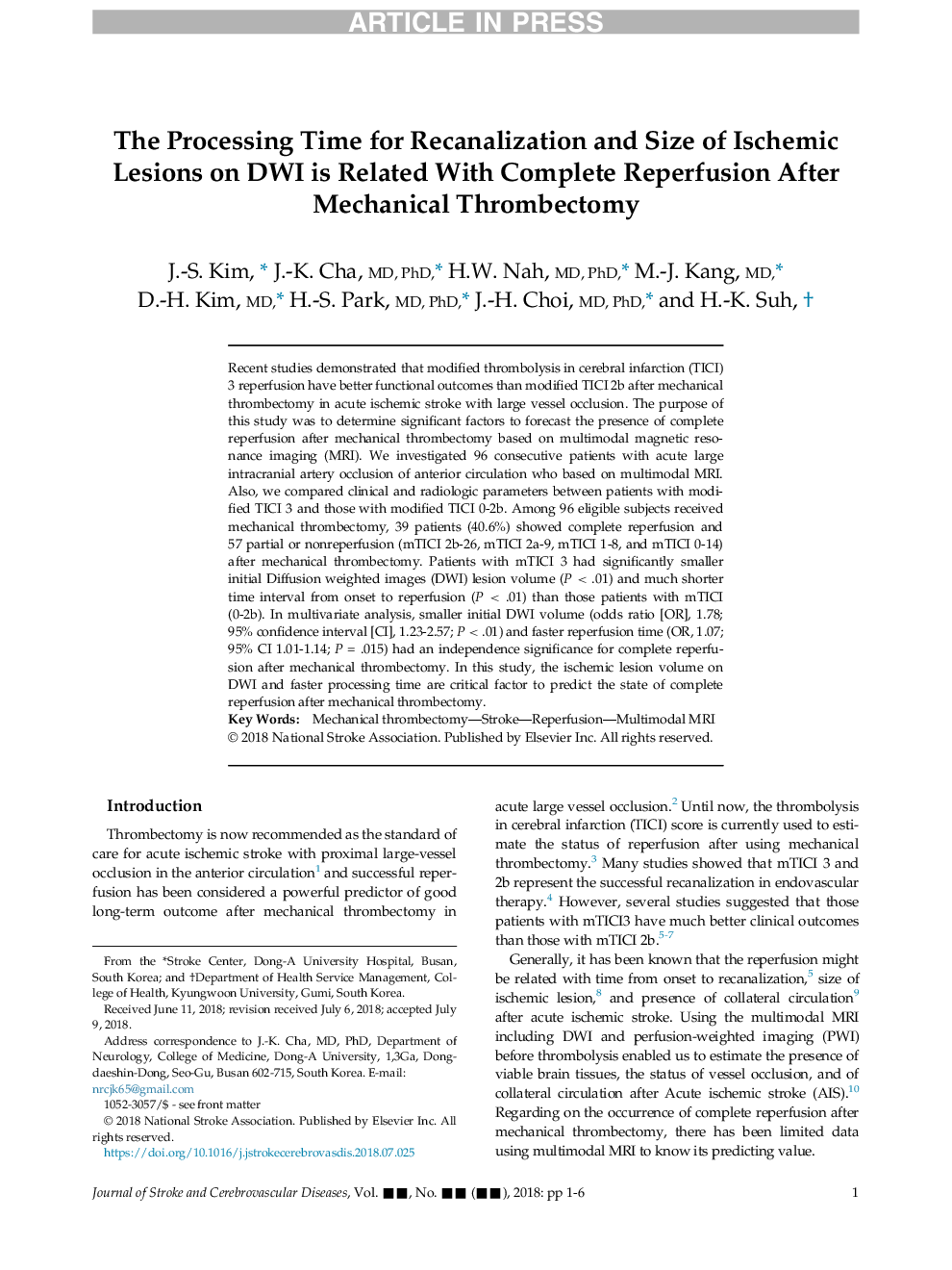| Article ID | Journal | Published Year | Pages | File Type |
|---|---|---|---|---|
| 11010573 | Journal of Stroke and Cerebrovascular Diseases | 2018 | 6 Pages |
Abstract
Recent studies demonstrated that modified thrombolysis in cerebral infarction (TICI) 3 reperfusion have better functional outcomes than modified TICI 2b after mechanical thrombectomy in acute ischemic stroke with large vessel occlusion. The purpose of this study was to determine significant factors to forecast the presence of complete reperfusion after mechanical thrombectomy based on multimodal magnetic resonance imaging (MRI). We investigated 96 consecutive patients with acute large intracranial artery occlusion of anterior circulation who based on multimodal MRI. Also, we compared clinical and radiologic parameters between patients with modified TICI 3 and those with modified TICI 0-2b. Among 96 eligible subjects received mechanical thrombectomy, 39 patients (40.6%) showed complete reperfusion and 57 partial or nonreperfusion (mTICI 2b-26, mTICI 2a-9, mTICI 1-8, and mTICI 0-14) after mechanical thrombectomy. Patients with mTICI 3 had significantly smaller initial Diffusion weighted images (DWI) lesion volume (P < .01) and much shorter time interval from onset to reperfusion (P < .01) than those patients with mTICI (0-2b). In multivariate analysis, smaller initial DWI volume (odds ratio [OR], 1.78; 95% confidence interval [CI], 1.23-2.57; P < .01) and faster reperfusion time (OR, 1.07; 95% CI 1.01-1.14; P = .015) had an independence significance for complete reperfusion after mechanical thrombectomy. In this study, the ischemic lesion volume on DWI and faster processing time are critical factor to predict the state of complete reperfusion after mechanical thrombectomy.
Related Topics
Health Sciences
Medicine and Dentistry
Clinical Neurology
Authors
J.-S. Kim, J.-K. MD, PhD, H.W. MD, PhD, M.-J. MD, D.-H. MD, H.-S. MD, PhD, J.-H. MD, PhD, H.-K. Suh,
